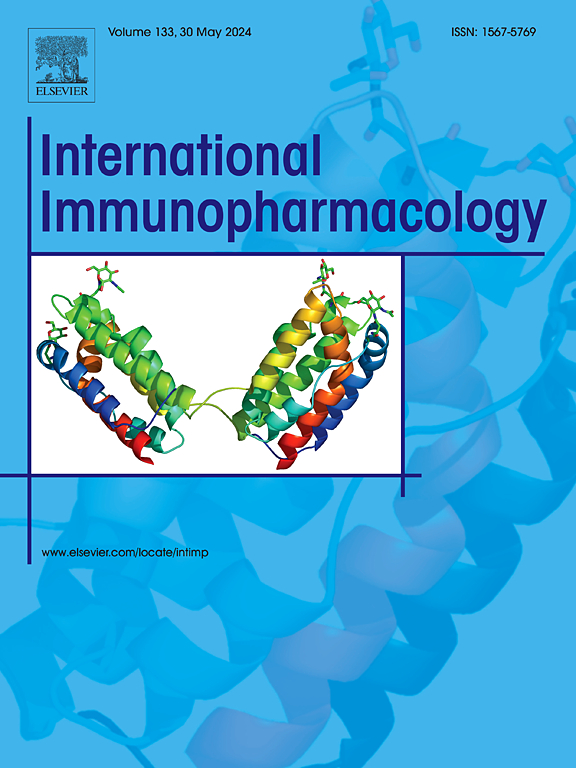Plasma and urine metabolomics for the identification of diagnostic biomarkers for sulfur mustard-induced lung injury
IF 4.8
2区 医学
Q2 IMMUNOLOGY
引用次数: 0
Abstract
Background
Sulfur mustard (SM) is a highly lethal chemical warfare agent that induces severe health complications in exposed individuals. Gaining insights into the metabolic changes caused by SM exposure is essential for understanding its underlying mechanisms and developing effective diagnostic and therapeutic interventions.
Methods
In this investigation, we utilized proton nuclear magnetic resonance (H-NMR) spectroscopy to conduct metabolomic analysis in patients diagnosed with mustard lung disease (MLD) using a non-targeted approach. Metabolite measurements were conducted on plasma and urine samples collected from a total of 54 individuals, including 20 individuals with mild MLD, 20 individuals with moderate MLD, and 14 healthy individuals. Multivariate and univariate analyses were applied to identify metabolites that distinguish between the different groups, and enrichment analysis was performed to unveil the underlying biochemical pathways involved.
Results
The obtained metabolic profile had the potential to differentiate moderate from healthy plasma, but not from mild patients using multivariate analysis. Sixteen metabolites from plasma were considered significantly different between the moderate and control groups (VIP > 1 and p < 0.05) that these metabolites involved in fatty acid and amino acid metabolism. Utilizing all 16 metabolites as a combined panel, we were able to distinguish between the moderate and control groups, achieving an area under the curve (AUC) of 0.854. Moreover, 6 and 8 urinary metabolites were detected between mild vs. control and moderate vs. control groups, respectively. Fourteen metabolites exhibited significant fold changes (FC) (FC < 0.66 or FC > 1.5; p < 0.05). These metabolites are involved in amino acid and nicotinate metabolism.
Conclusion
Our study provides novel insights into the metabolic changes associated with MLD and highlights potential pathways involved in the disease progression. These findings have implications for the development of targeted diagnostic and therapeutic strategies for MLD.
求助全文
约1分钟内获得全文
求助全文
来源期刊
CiteScore
8.40
自引率
3.60%
发文量
935
审稿时长
53 days
期刊介绍:
International Immunopharmacology is the primary vehicle for the publication of original research papers pertinent to the overlapping areas of immunology, pharmacology, cytokine biology, immunotherapy, immunopathology and immunotoxicology. Review articles that encompass these subjects are also welcome.
The subject material appropriate for submission includes:
• Clinical studies employing immunotherapy of any type including the use of: bacterial and chemical agents; thymic hormones, interferon, lymphokines, etc., in transplantation and diseases such as cancer, immunodeficiency, chronic infection and allergic, inflammatory or autoimmune disorders.
• Studies on the mechanisms of action of these agents for specific parameters of immune competence as well as the overall clinical state.
• Pre-clinical animal studies and in vitro studies on mechanisms of action with immunopotentiators, immunomodulators, immunoadjuvants and other pharmacological agents active on cells participating in immune or allergic responses.
• Pharmacological compounds, microbial products and toxicological agents that affect the lymphoid system, and their mechanisms of action.
• Agents that activate genes or modify transcription and translation within the immune response.
• Substances activated, generated, or released through immunologic or related pathways that are pharmacologically active.
• Production, function and regulation of cytokines and their receptors.
• Classical pharmacological studies on the effects of chemokines and bioactive factors released during immunological reactions.

 求助内容:
求助内容: 应助结果提醒方式:
应助结果提醒方式:


